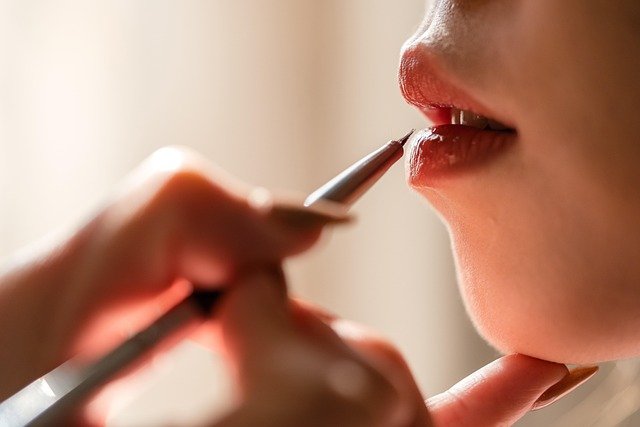Mascara Mastery: Techniques and Innovations in Lash Enhancement
Mascara, a staple in many makeup routines, has come a long way since its inception. From ancient Egyptians using kohl to darken their lashes to modern-day innovations in formulas and applicators, the pursuit of longer, fuller lashes has been a constant in beauty culture. Today, mascara is not just about color; it's a complex product designed to lengthen, volumize, curl, and even nourish eyelashes. The global mascara market is booming, with new technologies and formulations emerging regularly. This article delves into the world of mascara, exploring its history, current trends, application techniques, and the science behind lash enhancement.

The Science Behind Lash Enhancement
Modern mascaras are complex formulations designed to achieve multiple effects. The base of most mascaras is a mixture of waxes, oils, and pigments. Waxes provide structure and help the mascara adhere to lashes, while oils ensure smooth application. Pigments, typically iron oxides, give the mascara its color. Many mascaras also include polymers, which form a film around each lash, creating the appearance of length and volume. Some formulas incorporate fibers or nylon particles to further enhance lash appearance.
Innovative Formulas and Applicators
The mascara industry is continually evolving, with new formulas and applicators hitting the market regularly. Water-resistant and waterproof mascaras use silicone-based ingredients to create a water-repellent film on lashes. Tubing mascaras, a relatively recent innovation, use flexible polymers that form tiny tubes around each lash, offering smudge-proof wear. Lash-nourishing mascaras incorporate ingredients like vitamin E, panthenol, and keratin to condition and strengthen lashes over time.
Applicator design is equally crucial in mascara performance. Traditional spiral brushes have given way to innovative wands with specially designed bristles and shapes. Curved wands help lift and curl lashes, while ball-tip wands allow for precise application to hard-to-reach lashes. Some brands have even introduced vibrating wands, claiming they help separate and coat each lash more effectively.
Application Techniques for Maximum Impact
Proper application technique can significantly enhance the effects of mascara. Makeup artists recommend starting with clean, dry lashes. Curling lashes before application can open up the eyes and provide a better base for the mascara. When applying, many professionals suggest wiggling the wand from the base of the lashes to the tips, which helps separate and coat each lash evenly. For added volume, allowing the first coat to dry slightly before applying a second can prevent clumping.
The Lash Extension Trend and Its Impact
The rise of lash extensions has influenced the mascara market. While some opt for semi-permanent extensions, others seek mascaras that can mimic this look. Fiber mascaras, which use tiny fibers to build length and volume, have gained popularity as a temporary alternative to extensions. Some brands have even developed two-step systems that combine a base coat with fibers and a top coat to seal them in place.
Sustainability and Clean Beauty in Mascara
As with many beauty products, there’s a growing demand for sustainable and “clean” mascaras. Brands are responding by developing formulas free from parabens, phthalates, and other controversial ingredients. Vegan mascaras, which avoid animal-derived ingredients like beeswax, are also on the rise. Packaging is another area of focus, with some brands opting for recyclable or refillable containers to reduce plastic waste.
The Cultural Significance of Long Lashes
The desire for long, lush lashes is deeply ingrained in many cultures. In Western beauty standards, long lashes are often associated with femininity and youthfulness. This cultural emphasis has driven the mascara industry’s growth and the development of more extreme lash enhancement methods like extensions and lifts. However, there’s also a growing movement challenging these beauty norms, with some choosing to embrace their natural lashes or forego mascara altogether.
Mascara in the Age of Social Media
Social media has significantly impacted the mascara market. Instagram and TikTok are filled with before-and-after videos showcasing mascara effects, often using exaggerated techniques for dramatic results. These platforms have become crucial for brand marketing, with influencers and makeup artists demonstrating application techniques and reviewing new products. The viral nature of social media can make or break a mascara launch, driving sudden demand for particular products.
The Future of Lash Enhancement
As technology advances, the future of mascara looks promising. Some companies are exploring smart mascaras that can adapt to individual lash needs or environmental conditions. Others are looking into more sustainable formulations and packaging. There’s also ongoing research into lash-growth serums, which could potentially be incorporated into mascara formulas for long-term lash enhancement.
In conclusion, mascara remains a cornerstone of many makeup routines, continually evolving to meet changing consumer demands and technological advancements. From its ancient origins to its current high-tech formulations, mascara exemplifies the ongoing human fascination with enhancing natural beauty. As the industry continues to innovate, we can expect to see even more exciting developments in lash enhancement, balancing effectiveness with sustainability and individual expression.




